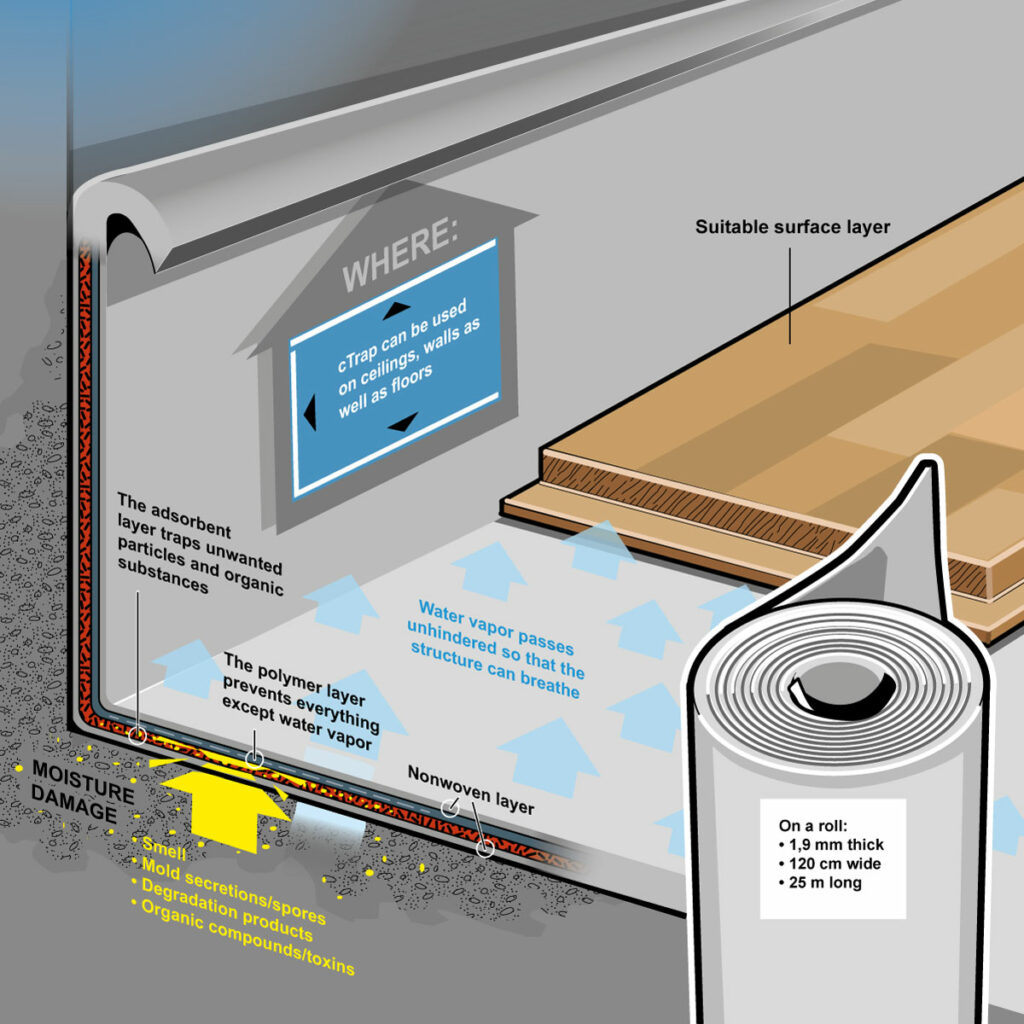
Inner layer
The inner protective layer has a fluffy surface and is made of non-woven polyester. It is this layer that lies against the source of the emissions.
Adsorption layer
The adsorption layer is the second layer (going from inside to out) in the cTrap cloth. It is this layer that adsorbs the emissions and sees to it that they stay there.
Polymer sheet
The polymer layer functions as a barrier which is airtight but still allows moisture to pass through. This barrier makes the adsorption more effective while preventing emissions from outside coming in contact with the adsorption layer.
Outer layer
The outer protective layer is also made of non-woven polyester. It is this layer that will lie against the flooring or the plasterboard which is mounted on top of the cTrap as the final finishing.
What emissions exist in the air?
Forskning har visat att cTrap effektivt binder in emissionsämnen som är vanliga vid innemiljöproblem:
- Saponification products from moisture-damaged flooring adhesive
- Other floor emissions such as phenols and TXIB
- Chlorophenols and chloranisoles from treated wood
- Odorous substances
- Alcohols
- Aldehydes
- PAH
- Emissions from tar and creosote
- PCBs
- Terpenes
- Aromatics
- Sulphur compounds